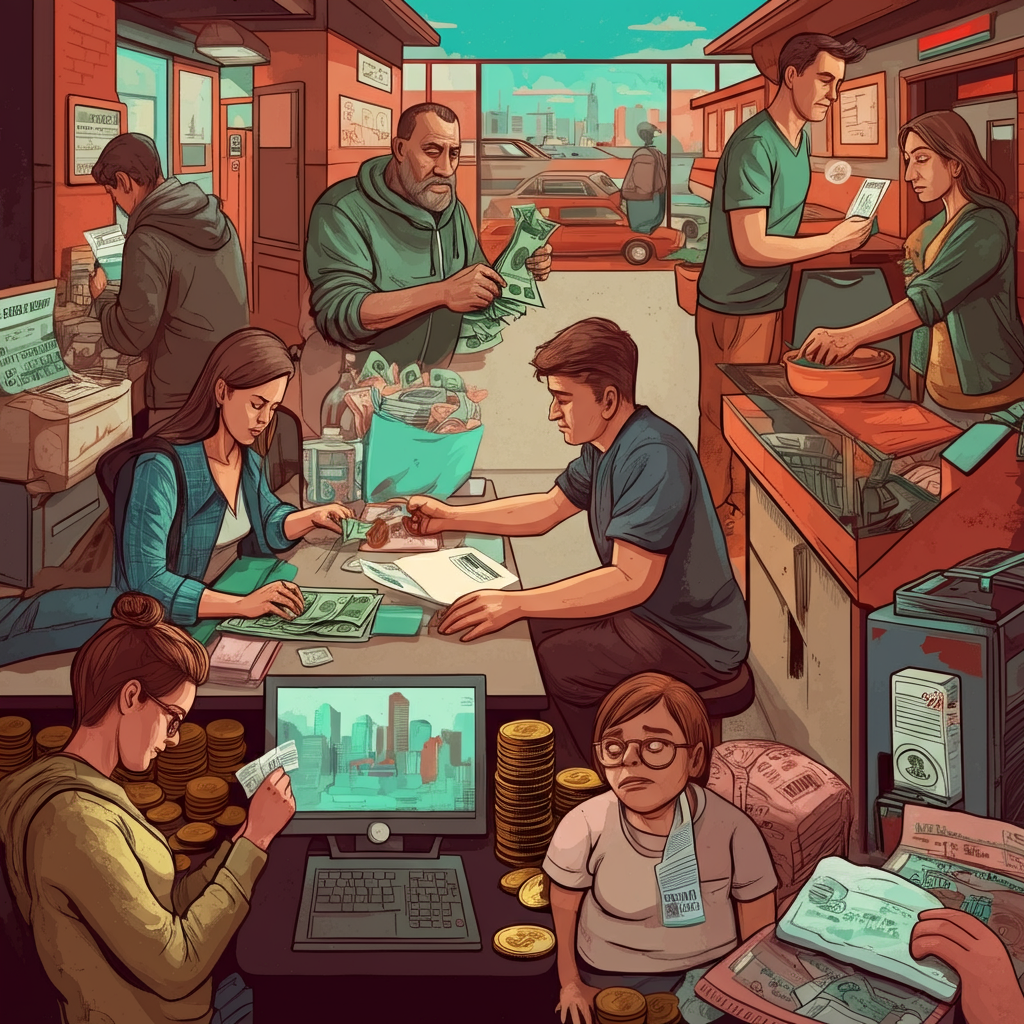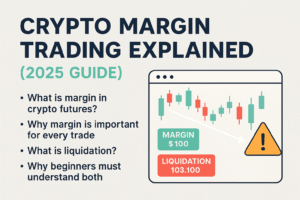In 2025, many Americans notice that despite receiving higher paychecks, their money doesn’t stretch as far as it used to. Average weekly wages have increased by 3.4% from February 2024 to February 2025, while inflation during the same period was 2.8%, resulting in a modest real wage growth of 0.6% USAFacts.
However, this slight gain is often offset by rising costs in essential areas such as housing, healthcare, and education. For instance, rent prices in major cities have continued to climb, and healthcare premiums have seen significant increases, consuming a larger portion of household incomes.
Moreover, the burden of debt adds to the financial strain. U.S. households are carrying a record $18.04 trillion in debt, and the resumption of student loan repayments further tightens budgets Reuters. These factors contribute to the feeling that, despite nominal wage increases, the actual purchasing power of many Americans is diminishing.
The Illusion of Economic Progress
While wage growth statistics may suggest economic improvement, the reality for many workers tells a different story. The average weekly wage in January 2025 was approximately $1,225, a 0.7% increase from the previous year after adjusting for inflation . However, this increase is modest when considering the rising costs of living. Additionally, consumer expectations reflect concerns over a weakening labor market and slower income growth, with projected household pay growth falling to 2.8% .
These dynamics create a disconnect between the perceived economic indicators and the lived experiences of many Americans. Despite higher nominal wages, the combination of increased living costs and debt obligations means that the financial well-being of many households remains under pressure.
Inflation: The Silent Killer of Your Salary
Persistent Inflation Post-COVID and During Global Disruptions
In 2025, inflation continues to erode the purchasing power of American workers, particularly those in the middle-income bracket. Despite the Consumer Price Index (CPI) showing a 2.4% increase over the 12 months ending in March 2025. many households feel the strain as wages struggle to keep pace with rising costs. The lingering effects of the COVID-19 pandemic, coupled with global supply chain disruptions and recent tariff implementations, have contributed to sustained inflationary pressures. These factors have led to increased prices for essential goods and services, making it challenging for families to maintain their standard of living.
How Everyday Items Have Outpaced Wage Growth
While wages have seen nominal increases, the cost of everyday necessities has risen more sharply. For instance, the food index increased by 3.0% over the last year, with specific categories like meats, poultry, fish, and eggs experiencing even higher hikes. Housing costs, which constitute a significant portion of household expenses, have also seen substantial increases. These rising costs outpace wage growth, effectively diminishing the real income of many Americans. As a result, even as paychecks grow in size, their actual buying power diminishes, leading to financial strain for many families.
2025 Inflation Trends and Their Impact on Middle-Income Americans
The economic landscape of 2025 presents a complex picture. While overall inflation rates have moderated compared to the peaks seen in previous years, the introduction of new tariffs has introduced fresh uncertainties. These tariffs have led to increased prices for imported goods, further straining household budgets. Middle-income Americans, in particular, are feeling the pinch. A recent survey indicated that 62% of middle-income individuals report financial stress due to inflation, up from 57% in the previous quarter. Additionally, 46% expect their financial situation to worsen in the coming year, highlighting growing concerns about economic stability.
In summary, while headline inflation figures may suggest a stabilizing economy, the lived experiences of many Americans tell a different story. Persistent inflation, driven by both domestic and global factors, continues to erode the purchasing power of wages, making it imperative for policymakers to address these challenges to ensure economic security for all.

Real Wages vs. Nominal Wages: What’s the Difference?
Nominal Wage Increases vs. Inflation-Adjusted (Real) Income
Nominal wages refer to the amount of money earned in current dollars, without accounting for inflation. Real wages, on the other hand, adjust nominal wages for changes in the cost of living, providing a more accurate picture of purchasing power. For instance, between February 2024 and February 2025, the nominal average weekly wage in the U.S. increased by 3.4%, from $1,185 to $1,225. However, when adjusted for inflation, real wage growth was only 0.58%, equating to an additional $7 per week. USAFacts
Why a $1,000/Month Raise May Still Leave You Poorer
A substantial nominal raise, such as $1,000 per month, might seem significant. However, if the prices of essential goods and services rise at a similar or faster rate, the additional income may not translate into increased purchasing power. For example, if inflation leads to higher costs for housing, food, and healthcare, the real value of the raise diminishes, potentially leaving individuals with less financial flexibility than before.
U.S. 2023–2025 Data Showing Stagnant or Falling Real Wages
Data from the U.S. Bureau of Labor Statistics indicates that from March 2024 to March 2025, real average hourly earnings for all employees increased by 1.4%, seasonally adjusted. However, the average workweek decreased by 0.6%, resulting in a 0.8% increase in real average weekly earnings over this period. This modest growth suggests that, despite nominal wage increases, real earnings have remained relatively stagnant, highlighting the impact of inflation on workers’ purchasing power.
Corporate Profits vs. Worker Compensation
Record Corporate Profits Amid Stagnant Wages
In 2025, U.S. corporate profits have reached unprecedented levels, with companies reporting significant earnings growth. For instance, S&P 500 companies experienced an 18.6% increase in quarterly earnings from the fourth quarter of 2023 to the fourth quarter of 2024, marking the largest year-over-year jump since 2021 U.S. Bank. This surge in profits has been attributed to factors such as technological investments and robust consumer spending.
However, this profitability has not translated into proportional wage growth for workers. While corporate earnings have soared, wages as a share of the Gross Domestic Product (GDP) remain near historic lows. This disparity highlights a growing disconnect between the financial success of corporations and the compensation of their employees.

Shareholder Value vs. Employee Value in 2025’s Economic Model
The current economic model heavily emphasizes maximizing shareholder value, often at the expense of employee compensation. Companies have prioritized stock buybacks and dividend payouts to reward shareholders. For example, following the 2017 tax cuts, 11 major U.S. consumer goods companies spent over three times as much on stock buybacks as they did on federal taxes, allocating $463 billion to buybacks compared to $140 billion in taxes .
This focus on shareholder returns has led to a reallocation of resources away from workers. Research indicates that increased shareholder power often results in cuts to employment and wages, transferring value from employees to shareholders without necessarily enhancing firm productivity .Federal Reserve Bank of Chicago
The Growing Wealth Gap in the U.S. Labor Market
The disparity between corporate profits and worker compensation contributes to a widening wealth gap in the U.S. labor market. As companies continue to report record earnings, the benefits are disproportionately accruing to shareholders and top executives, leaving average workers with stagnant wages. This trend exacerbates income inequality and raises concerns about the long-term sustainability of the current economic model.
Addressing this imbalance may require policy interventions aimed at promoting equitable wealth distribution, such as revisiting corporate tax structures, encouraging profit-sharing mechanisms, and strengthening labor protections.
Housing Crisis: The Rent Is Too Damn High
Median Rent Prices Rising Faster Than Income Across All Major Cities
In 2025, the U.S. housing market continues to challenge affordability, with median rent prices outpacing income growth in many metropolitan areas. Despite a slight decrease in median asking rents to $1,703 in January 2025, down 0.2% from the previous year, rents remain significantly higher than pre-pandemic levels, exceeding January 2020 figures by 16.1% .Realtor
This persistent rent burden is compounded by the widening income gap between renters and potential homeowners. As of early 2025, Americans need to earn $116,633 annually to afford a median-priced home, which is 81.8% more than the $64,160 required to rent a typical apartment . This disparity underscores the growing financial strain on individuals seeking to transition from renting to homeownership.Press Release Services+2Redfin+2MarketWatch+2
Homeownership Slipping Out of Reach for Younger Americans
Younger generations are facing increasing barriers to homeownership. The homeownership rate for individuals under 35 dropped to 36.3% in the last quarter of 2024, the lowest since 2019 . Factors contributing to this decline include elevated mortgage rates, tight housing supply, and rising home prices. For example, the median home price rose by 2.9% year-over-year to $424,430, and the 30-year fixed-rate mortgage stood at 6.62% as of April 2025 .Eye On HousingMarketWatch
These economic conditions have led many young adults to delay or forgo homeownership, with some turning to alternative financial strategies. The FIRE (Financial Independence, Retire Early) movement has gained popularity among Gen Z, emphasizing frugality and early retirement over traditional milestones like buying a home .New York Post
Real Estate Speculation, Investment Funds, and Foreign Ownership as Drivers
The housing market’s affordability crisis is further exacerbated by real estate speculation and investment practices. Large investment funds and foreign investors have increasingly entered the U.S. housing market, purchasing properties for rental income or asset appreciation. This influx of capital has driven up property values, making it more difficult for individual buyers to compete. Additionally, developers who overbuilt during periods of high demand are now benefiting from a slowdown in new construction, allowing them to increase rents by up to 5% annually WSJ.
These dynamics contribute to a housing environment where affordability remains a significant challenge, particularly for younger and middle-income Americans. Addressing these issues may require policy interventions aimed at increasing housing supply, regulating investment practices, and providing financial assistance to prospective homeowners.

Healthcare and Education: Your Hidden Costs
U.S. Healthcare Premiums, Deductibles, and Student Loans Eating Up Salaries
In 2025, healthcare and education expenses continue to place significant financial strain on American households. The average monthly premium for an Affordable Care Act (ACA) health insurance plan is approximately $590, with bronze plans averaging $495 and silver plans around $618 . Additionally, the average annual deductible for employer-sponsored health plans ranges from just over $1,000 to over $2,600 . These rising costs contribute to a growing number of adults—approximately 11%—who are unable to afford or access quality healthcare .ForbesInvestopediaBenefitsPro
On the education front, student loan debt remains a significant burden. The average student loan debt per borrower is $38,883, with total student loan debt in the U.S. reaching $1.77 trillion . This financial obligation often extends for decades, affecting borrowers’ ability to save, invest, or make significant purchases.Ramsey Solutions+1NerdWallet: Finance smarter+1
Why Even High Earners Feel Financially Trapped
Even individuals with higher incomes are not immune to these financial pressures. Rising healthcare premiums and deductibles, coupled with substantial student loan repayments, can consume a significant portion of their income. This situation leaves many feeling financially trapped, as they struggle to balance current expenses with future financial goals. The combination of escalating healthcare costs and persistent student loan debt underscores the need for comprehensive policy solutions to alleviate these burdens.
In contrast to the United States, where healthcare and education expenses significantly impact household budgets, several countries have implemented public systems that alleviate these financial burdens.
Countries with Public Services Easing Financial Burdens
Healthcare Systems
Countries like Canada, the United Kingdom, Germany, and France have established public healthcare systems that provide universal coverage to their citizens. These systems are primarily funded through taxation and aim to ensure that all individuals have access to necessary medical services without the fear of incurring substantial out-of-pocket expenses. For instance, the UK’s National Health Service (NHS) offers comprehensive healthcare services funded by general taxation, eliminating the need for private health insurance for most residents. Similarly, France operates a universal health insurance system that reimburses a significant portion of medical costs, with patients covering the remainder through supplementary private insurance or out-of-pocket payments.
Education Systems
In countries such as Finland, Sweden, and Germany, education from primary through tertiary levels is publicly funded, reducing the financial strain on families. Finland’s education system is renowned for its quality and accessibility, offering free education and minimal costs for students. Sweden provides free education at all levels, including higher education, and offers financial support to students through grants and loans. Germany’s system allows students to attend public universities without tuition fees, making higher education accessible to a broader population.

Key Takeaways
- Universal Coverage: Many countries have implemented universal healthcare systems that ensure all citizens have access to necessary medical services without significant financial hardship.
- Free or Low-Cost Education: Publicly funded education systems in various countries reduce the financial barriers to obtaining quality education, from primary school through university.
- Tax-Funded Systems: These services are often funded through taxation, spreading the financial responsibility across the population and ensuring that essential services are available to all, regardless of income.
While the U.S. continues to grapple with high healthcare premiums, deductibles, and student loan debts, these international models demonstrate that it is possible to provide essential services without placing undue financial strain on individuals.
If you’re interested in exploring how these systems operate in more detail or how they compare to the U.S. system in specific areas, feel free to ask!
The Role of Automation and AI in Salary Suppression
AI and Automation Replacing Jobs or Lowering Human Wage Value
In 2025, artificial intelligence (AI) and automation are increasingly replacing human labor, particularly in roles involving routine tasks. For example, AI technologies like OptimAI Recruiter are automating candidate sourcing, screening, and scheduling in recruitment processes Business Insider. Similarly, in the legal field, AI is performing tasks traditionally handled by lawyers, such as document review and legal research Business Insider.
This shift leads to wage suppression as companies reduce labor costs by substituting human workers with AI systems. While AI can increase efficiency, it also contributes to a decrease in the demand for human labor, thereby exerting downward pressure on wages.
Gig Work, Short-Term Contracts, and Remote Outsourcing as Corporate Tools to Avoid Full-Time Pay
The gig economy has expanded significantly, with gig workers expected to comprise nearly 50% of the U.S. workforce by 2025 . Companies increasingly rely on gig work, short-term contracts, and remote outsourcing to circumvent the costs associated with full-time employment, such as benefits and job security.Burnett Specialists
This trend allows employers to maintain a flexible workforce while minimizing long-term financial commitments. However, for workers, this often means reduced job stability, lack of benefits, and income variability, all of which contribute to financial insecurity.
The “Overqualified Underpaid” Paradox in 2025
The “overqualified underpaid” paradox persists in 2025, as employers often seek candidates with advanced qualifications but offer compensation that does not align with the level of expertise required. This mismatch leads to job dissatisfaction and underutilization of skills.
Highly educated and experienced professionals are increasingly finding themselves in positions that do not match their qualifications, leading to frustration and a sense of undervaluation. This phenomenon is observed across various sectors, including technology, healthcare, and education.
The Fed’s Role in Interest Rate Hikes and Its Effect on the Cost of Living
In 2025, the Federal Reserve has maintained its benchmark interest rate between 4.25% and 4.50%, with projections for two rate cuts later in the year. However, these cuts are anticipated to be modest due to persistent inflation and trade uncertainties U.S. Bank. Higher interest rates increase borrowing costs, affecting mortgages, car loans, and credit cards, thereby elevating the cost of living for households.
Additionally, recent tariff policies have introduced economic shocks, potentially slowing growth and increasing unemployment to around 5%, which could further strain household budgets.
Weak Wage-Focused Labor Policies and Lack of Strong Worker Protections
Despite a robust labor market, wage growth has not kept pace with inflation, leading to stagnant real wages. The federal minimum wage remains at $7.25 per hour, with 30 states and the District of Columbia setting higher minimums . Labor protections, including union rights and collective bargaining, have weakened over time, limiting workers’ ability to negotiate fair wages and benefits.

Debates Around Minimum Wage, Union Power, and Tax Laws
Proposals to raise the federal minimum wage to $15 per hour aim to lift millions out of poverty and boost earnings for low-wage workers . However, such initiatives face opposition, with concerns about potential job losses and increased business costs. The decline in union membership has also reduced collective bargaining power, affecting wage growth and working conditions.
Tax policies have similarly influenced economic disparities. While corporate profits have surged, tax cuts for the wealthy have not translated into proportional wage increases for workers, exacerbating income inequality .
U.S.-China Trade Tensions and Their Impact on Consumer Prices
In 2025, escalating trade tensions between the U.S. and China have led to significant tariff increases—145% by the U.S. and 125% by China—on a wide range of goods. This trade conflict has disrupted established supply chains, resulting in higher production costs and, consequently, increased prices for consumers. For instance, Pennsylvania’s economy faces potential setbacks due to these tariffs, as the state exported $3.1 billion in goods to China in 2023, supporting over 24,000 local jobs .AP NewsAxios
Additionally, the temporary exemption of consumer electronics from new tariffs has provided short-term relief; however, uncertainties remain as other levies on semiconductor products are expected in the coming months .AP News
The Ukraine War’s Ripple Effect on Global Supply Chains and U.S. Prices
The ongoing conflict in Ukraine has exacerbated global supply chain disruptions, particularly in energy and agricultural sectors. The war has led to increased energy prices, with U.S. consumers experiencing higher costs at the pump and for heating. A significant portion of consumers anticipates that the war will cause prices to rise significantly over the next several months .The Conference Board+1The Conference Board+1
Furthermore, the destruction of production facilities and the disruption of supply chains in Ukraine have contributed to higher production costs for businesses, leading to increased prices for goods and services .Центр Економічної Стратегії
Global Energy Prices and Their Impact on U.S. Households
Global energy prices have seen significant increases, driven by factors such as reduced reliance on Russian energy supplies and increased demand. For example, the rapid growth in LNG exports has driven up domestic natural gas prices in the U.S., adding to the cost-of-living pressures on households .IMD Business School
Additionally, the International Energy Agency projects that global electricity demand will continue to rise, further straining energy resources and potentially leading to higher prices for consumers .IEA
The Rise of “De-Dollarization” and Its Threat to U.S. Economic Stability
The trend of “de-dollarization,” where countries reduce their reliance on the U.S. dollar for international trade and reserves, poses a potential threat to the U.S. economy. The European credit rating agency Scope has issued a warning that the United States could face a downgrade if extended trade wars diminish global trust in the U.S. dollar .Reuters
Furthermore, J.P. Morgan’s 2025 forecast highlights that a structurally depressed dollar could lower foreign investment in the U.S. economy, affecting economic stability .JPMorgan Chase
Why Living in the U.S. Is Getting Harder Despite a “Growing Economy”
In 2025, while the U.S. economy shows signs of growth, many Americans are experiencing increased financial strain. The median home price has risen to $412,000, requiring approximately 10 workdays per month to cover mortgage payments. In states like Hawaii and California, this figure jumps to 17 and 15 workdays, respectively, due to higher housing costs .New York Post
Additionally, nearly 75% of U.S. households cannot afford a median-priced new home, priced at around $459,826. This affordability crisis is exacerbated by a shortage of homes, with a shortfall of 3.8 million units relative to new household formations .New York Post
State-Wise Breakdown of Affordability in 2025
The cost of living varies significantly across the United States. According to the U.S. News & World Report, Arkansas ranks #1 in affordability, followed by Mississippi and Oklahoma U.S. News. These states offer lower housing costs, utilities, and healthcare expenses.
Conversely, states like Hawaii, California, and New Jersey have higher costs of living, driven by elevated housing prices and living expenses Kiplinger.
Rural vs. Urban Life Cost Comparison
Living in rural areas often presents a more affordable option compared to urban centers. Rural regions typically offer lower housing costs, reduced transportation expenses, and more affordable groceries Farm Credit East.
However, urban areas provide greater access to job opportunities, healthcare facilities, and educational institutions. The decision between rural and urban living involves balancing affordability with access to amenities and services.
Americans Working Multiple Jobs Yet Still Unable to Save
In 2025, nearly 9 million Americans are juggling multiple jobs, comprising 5.6% of the civilian workforce—the highest rate since 2004 Advisor Perspectives. Despite this increased labor, many still struggle to save. A 2025 study reveals that 82% of American adults report financial stress, with 47% living paycheck to paycheck Fortune.
The Emotional Cost of Financial Insecurity
Financial stress is intricately linked to mental health challenges. A 2025 report highlights that financial stress is a leading cause of anxiety and depression, with many individuals struggling to maintain their mental well-being amid rising costs and economic uncertainties newerabehavioralhealth.com.
This stress often manifests in physical symptoms such as insomnia, headaches, and fatigue, and can lead to a sense of helplessness and diminished life satisfaction .
Rise of Burnout and Decline in Life Satisfaction in Working Classes
Burnout has reached alarming levels, with a 2025 study indicating that 66% of workers are experiencing burnout, an all-time high . This is particularly prevalent among younger employees, who are also reporting higher levels of stress and work absence .ForbesMental Health UK
The relentless pressure to work longer hours and manage multiple jobs has led to a decline in life satisfaction, with many individuals feeling disconnected from personal relationships and unable to enjoy leisure activities Forbes.
The Vicious Cycle: Work, Stress, and Mental Health
The interplay between financial stress and mental health creates a feedback loop: stress leads to mental distress, which can affect one’s ability to work, plan, or make decisions, deepening the financial strain Curated Mental Health. This cycle is particularly challenging for those in lower-income brackets, who may have limited access to mental health resources and financial support.
Breaking the Cycle: Strategies for Support and Change
To address this crisis, experts recommend:
- Integrating Financial and Mental Health Support: Clinics and mental health providers should screen for financial stress as a factor in diagnosis and treatment planning Curated Mental Health.
- Promoting Financial Literacy: Educating individuals on budgeting, debt management, and savings can empower them to make informed financial decisions.
- Advocating for Policy Changes: Implementing policies that ensure fair wages, affordable healthcare, and accessible mental health services can alleviate systemic pressures.
- Encouraging Workplace Well-being Programs: Employers should offer resources that support mental health, such as counseling services and flexible work arrangements.
Budgeting and Investing Smartly in a Low-Yield Salary World
In 2025, with inflation outpacing wage growth, it’s crucial to adopt effective budgeting strategies:
- 50/30/20 Rule: Allocate 50% of your income to essentials, 30% to discretionary spending, and 20% to savings and debt repayment. SmartPurse
- Emergency Fund: Aim to save 3–6 months’ worth of living expenses in high-yield savings accounts or Treasury securities to maintain returns in a lower-rate environment. Investopedia
- Budgeting Tools: Utilize apps like Monarch Money, Copilot Money, or Lunch Money to track and adjust your spending effectively. Business Insider
Side Hustles, Remote Global Gigs, and Passive Income Opportunities
Diversifying income streams is essential:
- Side Hustles: Engage in freelance writing, graphic design, or tutoring.MarketWatch+10Whop+10The US Sun+10
- Remote Gigs: Explore opportunities in virtual assistance, online teaching, or customer service.Amasty+1YouTube+1
- Passive Income: Consider investments in dividend stocks, real estate crowdfunding, or creating digital products like eBooks or online courses.
Advocacy: Pushing for Policy Reforms and Supporting Systemic Change
Advocating for fair wages and worker rights is vital:National Employment Law Project+2National Employment Law Project+2American Enterprise Institute+2
- Raise the Wage Act of 2025: Supports raising the federal minimum wage to $17 by 2030, benefiting approximately 22 million Americans. Congressman Bobby Scott+1aflcio.org+1
- National Employment Law Project (NELP): Advocates for raising the wage floor, strengthening contracted workers’ rights, and promoting workplace safety. National Employment Law Project
- AFL-CIO: Supports raising the federal minimum wage to $15 an hour by 2025, aiming to lift 1.3 million families out of poverty. aflcio.org
Conclusion: It’s Not Just You — The System is Broken
The challenges faced are systemic:
- Stagnant Wages: Despite economic growth, wages have not kept pace with the cost of living.
- Financial Insecurity: Many individuals are unable to save or invest due to high living expenses.
- Need for Systemic Change: Advocating for policy reforms, fair wages, and worker protections is essential to address these issues.
FAQs
1. Why does my salary feel less than it should, even though I’m earning more?
- Answer: While you may be receiving a higher salary, inflation and the rising cost of living often outpace wage growth. This means that the real value of your income, or purchasing power, decreases, making it harder to keep up with basic expenses.
2. What can I do to manage my finances when costs keep increasing, but my wages don’t?
- Answer: The key is smart budgeting. Try adopting the 50/30/20 rule: 50% for essentials, 30% for discretionary spending, and 20% for savings. Focus on cutting unnecessary expenses, invest in high-yield savings, and consider side hustles or passive income streams to supplement your income.
3. What side hustles can help me increase my income?
- Answer: Popular side hustles include freelancing (writing, design, programming), gig economy jobs (ridesharing, food delivery), and remote work (virtual assistance, tutoring). Passive income opportunities, like creating digital content or investing in dividend stocks, can also boost your income.
4. What are passive income opportunities in 2025?
- Answer: Passive income options include investing in dividend-paying stocks, real estate crowdfunding, or creating digital products such as eBooks and online courses. These income streams generate revenue with minimal active involvement once set up.
5. How can I push for systemic changes in wages and worker protections?
- Answer: Supporting organizations advocating for fair wages and worker protections, such as the National Employment Law Project (NELP), can help. You can also advocate for policies like raising the minimum wage and ensuring worker rights through political involvement and activism.
6. Is there a way to cope with the emotional toll of financial stress?
- Answer: Financial stress can take a heavy emotional toll, so it’s important to prioritize self-care. Seeking support from mental health professionals, practicing mindfulness, and building an emergency fund can help alleviate stress. Financial education also helps in managing uncertainty.
7. Why is it important to look at the bigger picture when understanding my financial struggles?
- Answer: Personal financial struggles are often a result of broader systemic issues like wage stagnation, rising costs, and policy decisions. Understanding the economic and policy context can help you better manage your personal finances and push for necessary reforms.









